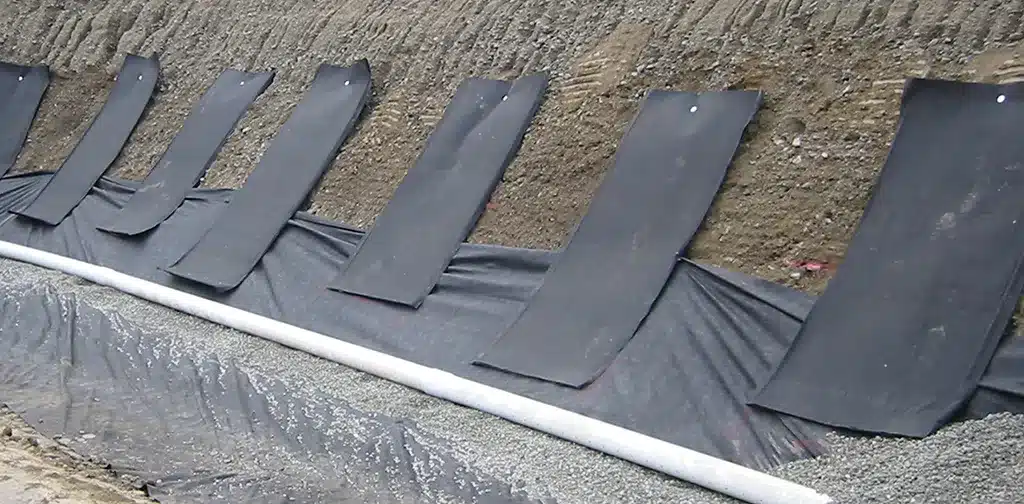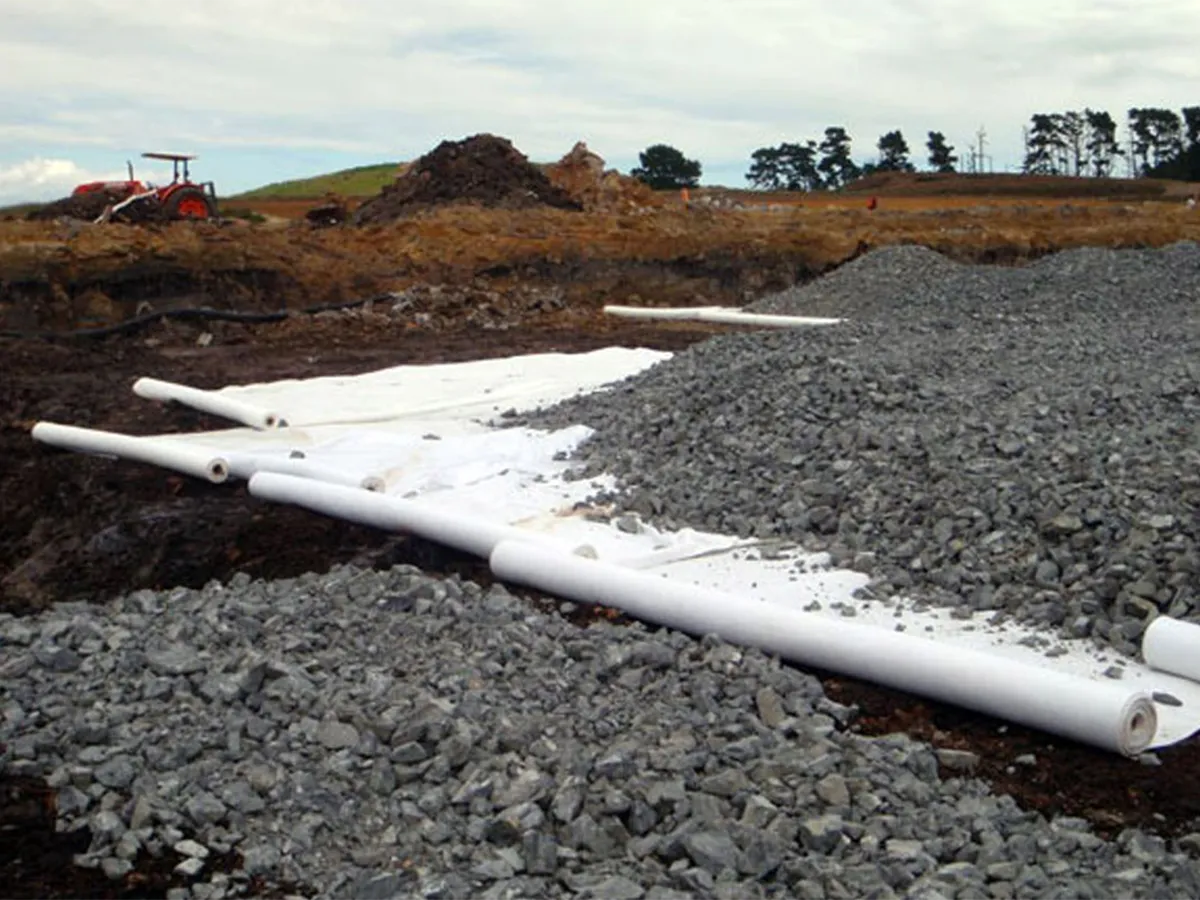+86-159 9860 6917
info@geofantex.com
geofantex@gmail.com
+86-400-8266163-44899
The realm of civil engineering and environmental management has long been enriched by the innovation of geotextile fabrics. Among these, non-woven geotextile fabric stands out for its versatility, durability, and a wide array of applications. This article delves into the essence of non-woven geotextile fabric, exploring its distinct characteristics compared to its woven counterparts, the various types available, and its practical applications. By unraveling the intricacies of non-woven geotextile fabric, we aim to highlight its crucial role in contemporary engineering solutions.

What is Non-Woven Geotextile Fabric?
Non-woven geotextile fabric, usually made using synthetic materials such as polyester or polypropylene and they are permeable, stands as a cornerstone in the realm of construction and environmental projects. Unlike their woven counterparts, which rely on the interlacing of threads, non-woven geotextiles achieve their unique characteristics through a bonding process—be it mechanical, thermal, or chemical. This method imparts a random, felt-like structure to the fabric, optimizing it for excellent filtration, separation, reinforcement, and protection capabilities. The innate versatility and efficiency of non-woven geotextile make it an essential component across a myriad of applications.
What is the Difference Between Woven and Non-Woven Geotextile?
The key difference between woven and non-woven geotextiles is not only in their manufacturing process and resultant structural properties but also in their tactile and visual characteristics. Woven geotextiles, which are produced by weaving together longitudinal and transverse threads, offer high tensile strength and are primarily used for stabilization and reinforcement purposes. They tend to have a plastic-like feel and appearance, reflecting their robust and structured nature. On the other hand, non-woven geotextiles, characterized by their irregular, felt-like structure, excel in tasks requiring filtration, drainage, and protection. Their fuzzy-like feel and appearance underscore their adaptability and effectiveness in allowing water flow and filtration. Thus, while woven geotextiles are better suited for applications demanding robust load distribution, non-woven geotextiles shine in scenarios where permeability and flexibility are crucial.

What are the Three Types of Geotextile Fabric?
Geogrids find applications in a wide array of projects, including construction, landscaping, and hardscaping projects, ranging from small-scale efforts to large-scale civil engineering works. They are commonly utilized in the construction of roads, railways, retaining walls, embankments, and more, where ground stability is of paramount importance. Beyond these traditional uses, geogrids also play a vital role in landfill construction, slope stabilization, and erosion control projects, demonstrating their versatility and adaptability to various soil types. This breadth of application makes them an indispensable tool not only in the construction industry but also in environmental management and aesthetic landscaping and hardscaping projects, underscoring their utility across a spectrum of developmental and conservation efforts.
Where Can Nonwoven Geotextile Be Directly Placed?
Nonwoven geotextile fabric is highly adaptable and can be directly placed on the prepared soil surface or between different soil layers for various purposes, making it a versatile solution in numerous settings. Some of the most common applications include:
- Underneath roadways and pavements: Here, it’s used to stabilize the ground, improve drainage, and separate the subgrade from aggregate layers, ensuring a solid foundation and extended lifespan of the roadway structure.
- Erosion control measures: Nonwoven geotextile fabric plays a critical role in shoreline protection structures or in preventing soil erosion on slopes, where it can be placed directly on the soil surface or between soil layers to secure the area against erosion.
- Landfills and containment projects: For filtration and protection, it prevents contaminants from seeping into the ground, being placed directly on the prepared surface or between layers of soil to safeguard the surrounding environment.
- Drainage systems: Utilized in French drains, retaining walls, or behind gabions to ensure efficient water flow while preventing soil migration, nonwoven geotextile fabric acts as a filtration layer, placed on the soil surface or between different layers to enhance performance and reliability.
Non-woven geotextile fabric is a technological marvel that plays a pivotal role in the success of various engineering and environmental projects. Its exceptional ability to filter, protect, and reinforce, coupled with its versatility across different applications, makes it an invaluable resource in modern construction and landscaping. As we continue to explore and expand its applications, non-woven geotextile fabric is set to remain a cornerstone in the quest for sustainable and effective engineering solutions.



Get Free Sample
We’ll respond as soon as possible(within 12 hours)






















